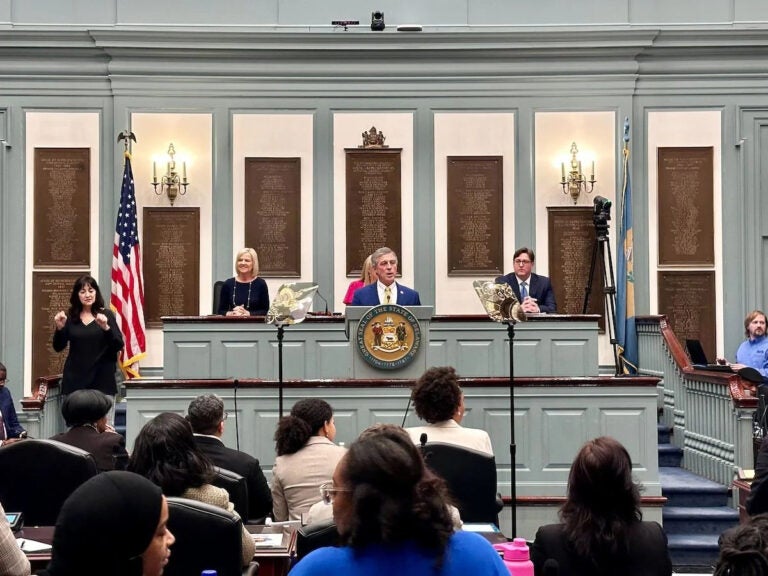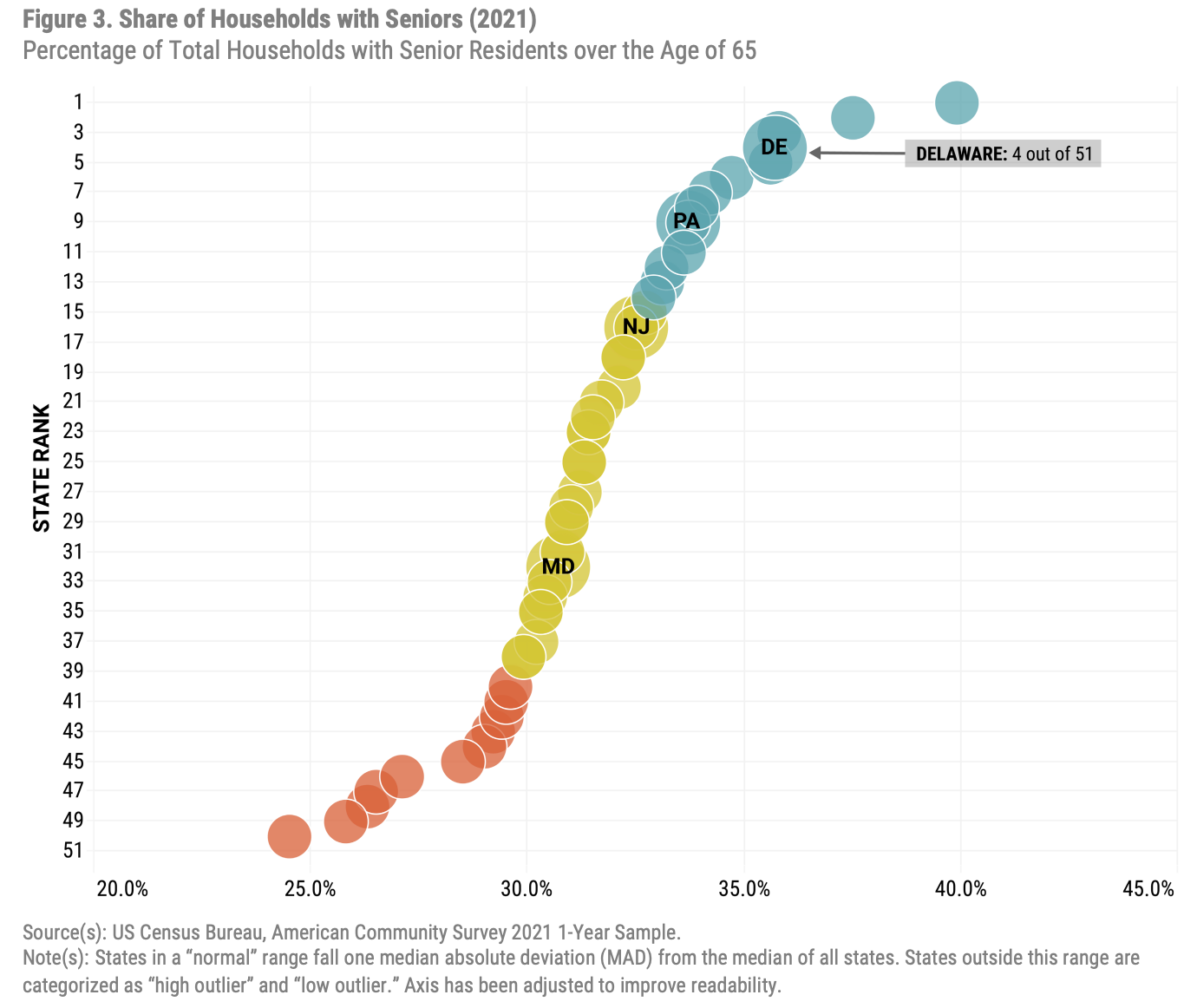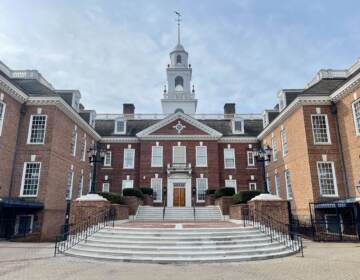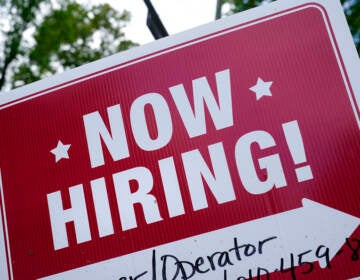Delaware economy faces challenge with more job openings than workers seeking employment
The Delaware Business Roundtable says reasons for the low labor rate include the increasing population of seniors moving to the state and difficulty finding child care.
Listen 1:29
Delaware's Governor John Carney takes the podium and delivers the 2024 State of the State address, during which he said, "“Right now there are 31,000 jobs available, but only 21,000 people looking for work." (Johnny Perez-Gonzalez/WHYY)
From Philly and the Pa. suburbs to South Jersey and Delaware, what would you like WHYY News to cover? Let us know!
Delaware’s economy has seen significant improvement since 2017, when Gov. John Carney first took office amid a major downturn where the state faced a $400 million budget shortfall.
And while Delaware’s economy has improved since then, the current state of affairs offers a different set of challenges. That includes a growing number of job openings, but fewer workers looking for work.
“Right now there are 31,000 jobs available, but only 21,000 people looking for work,” Carney said during his State of the State address last month.
To address these challenges and maintain economic momentum, Delaware Business Roundtable created the 2024 Delaware Investment Agenda, a blueprint focused on implementing effective solutions and recommendations. The roundtable made up of business leaders from around the state was founded in 1981 to support and guide the economy.
Their blueprint points to the increasing population of seniors moving to Delaware for its affordability and amenities as one reason for the low labor rate. Although this trend is beneficial for the local economy, it presents challenges in workforce availability for employers, which is becoming more evident.

Worker shortages are particularly challenging in southern Delaware, as more retirees relocate to be near the state’s beaches and benefit from favorable property tax rates.
“One of the explanations for Delaware’s low labor force participation rate is its relatively high share of seniors in the population. At 36%, Delaware has the fourth highest rate of households with a senior resident as of 2021,” said Roundtable executive director Robert Perkins. “In addition, we have the fifth highest share of households with people who have Social Security income.”
Child care is another major issue, causing millions of dollars in lost earnings and revenue yearly.
“Our report found that 13% of Delaware’s children with a family member who quit, changed or refused a job due to the difficulty of finding child care,” he said. “That’s one of the issues that many states are grappling with. That’s a challenge for individuals who want to work, a challenge for employers to provide it.”
“The resulting challenges to families and employers cost Delaware about $450 million in lost earnings and productivity and tax revenue each year,” he added.
While there could be various reasons for the low labor force participation rate, the roundtable offers three main recommendations to address these issues: innovation and entrepreneurship, talent development and long-term competitiveness.
“We believe that Delaware needs to create a science and technology strategy to guide the state’s efforts to foster and promote its innovation and entrepreneurship infrastructure,” he said. “We need to be intentional about searching for, incubating [and] nurturing the development of historically marginalized and underrepresented entrepreneurs and businesses.”
Perkins said the state also needs to invest in early childhood education “to increase access and improve outcomes for children and in the state.”
Part of the talent and workforce recommendation also involves making housing more affordable.
“Delaware has challenges as many other states do in affordable housing,” he said. “It’s a huge barrier and impediment to employment.”
While these actionable steps will take time and attention to set in motion, leaders are already looking ahead to address these issues. Currently, the Delaware General Assembly is considering six pieces of legislation designed to make housing more affordable.
WHYY is your source for fact-based, in-depth journalism and information. As a nonprofit organization, we rely on financial support from readers like you. Please give today.








